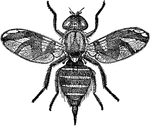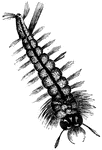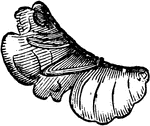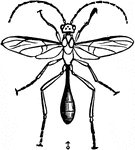
Ichneumon Fly
Ichneumon flies are solitary insects, and most are parasitoids—the larvae feeding on or in another…
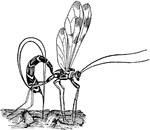
Ichneumon Fly
Ichneumon flies are solitary insects, and most are parasitoids—the larvae feeding on or in another…

Seed-Corn Maggot
"Seed-corn Maggot (Phorbia fusciceps). a, maggot; b, pupa. Kernels of Maize, showing work of the maggot."…

Maize Kernels Destroyed by Maggots
Illustration of two small corn (maize) kernels being eaten by maggots. One maggot is still inside one…
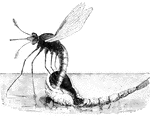
Mosquito
When the common mosquito is first hatched in the water it is called a wriggler. After developing to…
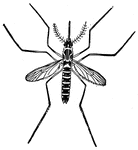
Mosquito
Mosquitos are parasitic insects that suck blood from humans and other mammals. They are known to spread…
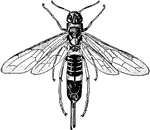
Pigeon Horntail
An insect known as the pigeon horntail (Tremex columba) deposits its eggs, by means of a strong, piercing…







